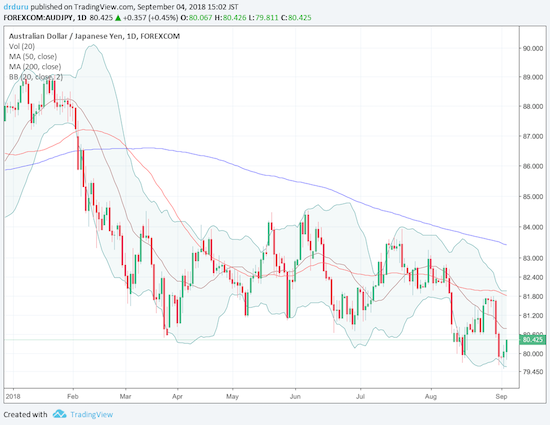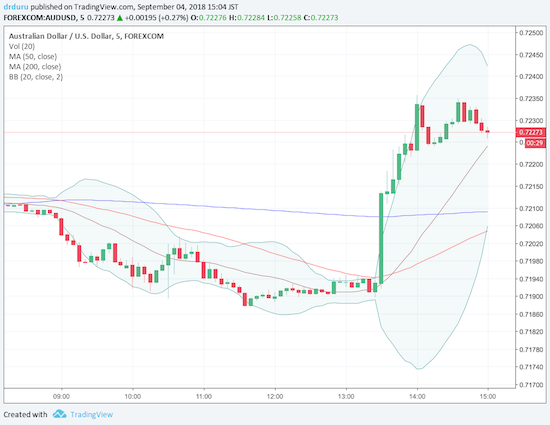In recent weeks, I have seen calls for the Reserve Bank of Australia (RBA) to cut interest rates.
It's important to remember when the RBA moves to cut interest rates, there will probably be two (or more) 25bp moves.
As my mate Saul Eslake once noted, interest rate changes are like cockroaches, when you get one, there is always another just around the corner— Stephen Koukoulas (@TheKouk) September 3, 2018
Part of the alarm no doubt came from some troubling economic data points…
Another round of horrid data: Retail sales 0.0%; manufacturing sales -1.6%; wholesale trade sales -1.9%; inventories up 0.6% (bodes poorly for future production); company profits good at 2.0% wage & salaries soft only up 4.5% reflecting employment – NOT underlying wages growth
— Stephen Koukoulas (@TheKouk) September 3, 2018
0
So I looked forward with great anticipation to tonight’s announcement on monetary policy from the RBA. Not only was there apparent economic tension, but technical tension existed across major Aussie currency pairs. Surprisingly, the RBA was definitively bullish in a statement that was not made at all to hint at imminent rate cuts. Instead, I can see a case for imminent rate hikes.
First of all, the RBA made zero mention of global trade wars and characterized China’s growth as only slowing “a little.” Traders have tended to sell the Australian dollar (FXA) on global and Chinese economic risks. Most importantly, the RBA made a bullish forward forecast on the economy along with an upbeat forecast on inflation:
“The Bank’s central forecast is for growth of the Australian economy to average a bit above 3 per cent in 2018 and 2019. In the first half of 2018, the economy is estimated to have grown at an above-trend rate…
Inflation is around 2 per cent. The central forecast is for inflation to be higher in 2019 and 2020 than it is currently. In the interim, once-off declines in some administered prices in the September quarter are expected to result in headline inflation in 2018 being a little lower, at 1¾ per cent.”
Employment and wages look good as well:
“The outlook for the labour market remains positive. The unemployment rate has fallen to 5.3 per cent, the lowest level in almost six years. The vacancy rate is high and there are reports of skills shortages in some areas. A further gradual decline in the unemployment rate is expected over the next couple of years to around 5 per cent. Wages growth remains low, although it has picked up a little recently. The improvement in the economy should see some further lift in wages growth over time, although this is likely to be a gradual process.”
With the policy rate at a historically low 1.50%, the RBA’s bullish statement suggests that rates are much more likely to increase before they decrease. Under this assessment, it makes sense that the Australian dollar surged in the immediate wake of the policy statement. I originally intended to wait until the dust settled to follow the post-staement momentum, but I think the messaging from the RBA is sufficiently clear. The Australian dollar is oversold at current levels.
I started buying the Australian dollar against the Japanese yen (FXY) as the yen is likely to get sold in a risk-on environment. I can also collect carry while I wait for the new upside momentum to extend itself. I am also targeting buys against the euro (FXE) and perhaps the British pound (FXB) as a combination play on Brexit drama. (Of course, another trade war disruption could send sellers right back into the Australian dollar, but I will treat such dips as buying opportunities until/unless important support/resistance levels get broken on the related Aussie currency pair).

Source: Trading View

Source: Trading View
Be careful out there!
Full disclosure: long AUD/JPY
